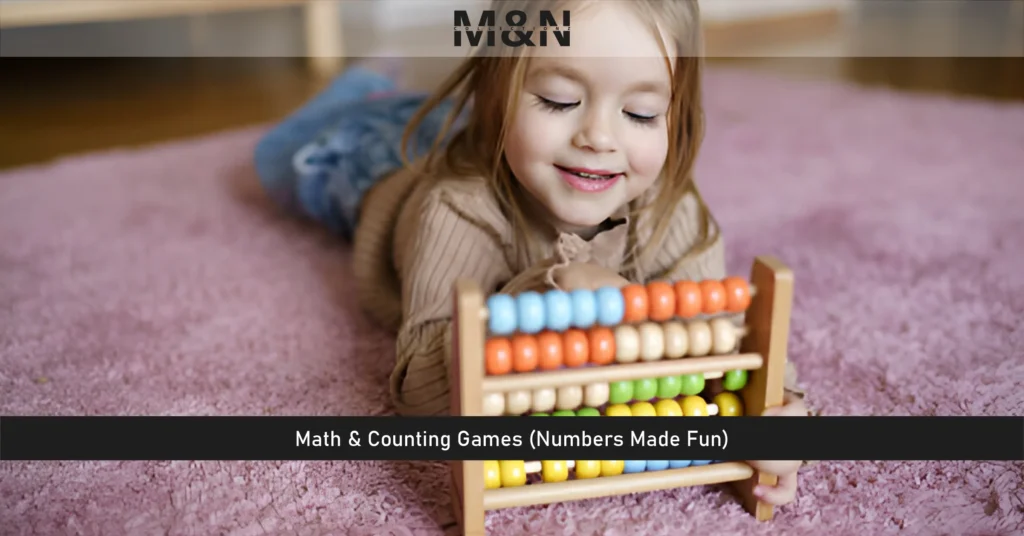10 Educational Activities to Keep Kids Busy at Home

Ever wish you could turn “I’m bored!” into “This is awesome!” without a screen? You’re in luck! These 10 educational activities aren’t just fun—they’re stealthy learning tools designed to spark curiosity, creativity, and critical thinking. From kitchen chemistry to living room safaris, let’s transform your home into a playground for the mind.
Table of Contents
1. DIY Science Experiments (STEM Learning, Hands-on Fun)
Why it’s gold: Science isn’t just for labs—it’s hiding in your pantry! These experiments teach kids to hypothesize, observe, and problem-solve.
Upgrade your experiment game:
- Elephant Toothpaste: Mix hydrogen peroxide, yeast, dish soap, and food coloring for a foamy explosion. Pro tip: Use a plastic bottle outdoors for easy cleanup.
- Lava Lamp in a Jar: Fill a jar with water, oil, food coloring, and Alka-Seltzer tablets. Discuss density and chemical reactions as bubbles rise.
- Weather Station: Create a rain gauge (plastic bottle) and anemometer (cups and sticks) to track daily weather.
Safety first:
- Wear goggles for messy experiments.
- Use child-safe ingredients (avoid harsh chemicals).
Age tweaks:
- Ages 3–5: Focus on sensory play (e.g., mixing colored water).
- Ages 6–10: Add lab notebooks to record predictions and results.
2. Educational Board Games & Puzzles (Brain-Boosting Playtime)
Why it’s gold: Games teach strategy, patience, and how to lose gracefully (a life skill!).
Hidden gems you’ve never heard of:
- Robot Turtles (Ages 4+): Teaches coding basics with cards and turtles.
- Prime Climb (Ages 8+): A math game where players multiply/divide to reach the center.
- Rush Hour (Ages 6+): A solo traffic-jam logic puzzle.
DIY game hack: Turn old magazines into a scavenger hunt board game. Cut out pictures, glue them to cardboard, and write challenges like “Find something blue” or “Count all the dogs.”
Pro tip: Rotate games weekly to keep things fresh. Store puzzles in labeled ziplock bags to avoid missing pieces.

3. Creative Storytelling & Writing Prompts (Imagination Station)
Why it’s gold: Storytelling builds empathy, vocabulary, and the ability to think on their feet.
Take it further:
- Story Dice: Make DIY dice with pictures (e.g., dragon, spaceship, key). Roll them and invent a story using the images.
- Collaborative Novel: Start a family story where each person adds a paragraph daily. Bind it into a book at the end!
- Podcast Pretend: Record your child “interviewing” a stuffed animal about their “travels.”
Writing prompts for reluctant writers:
- Comic Strip Templates: Download free printable panels online.
- Text-Based Adventures: “You’re trapped on a pirate ship. Write three ways to escape.”
4. Indoor Scavenger Hunt (Adventure Without Leaving Home)
Why it’s gold: Encourages observation, critical thinking, and teamwork.
Next-level hunts:
- Rhyming Clues: “I’m where you rest your head at night, but I’m not a bed. Look where clothes are kept instead!” (Answer: Dresser!)
- Math Scavenger Hunt: “Find something with 4 corners + something round. Add their numbers!” (E.g., a book + clock = 4 + 12 = 16).
- Glow-in-the-Dark Hunt: Hide glow sticks in a dark room for a spy-themed mission.
Free printables: Websites like Teachers Pay Teachers offer themed hunts (bugs, shapes, letters).
5. Arts & Crafts Projects (Messy, Creative Fun)
Why it’s gold: Art fosters self-expression and fine motor skills.
Beyond the basics:
- Shadow Tracing: Tape paper to a sunny window. Trace toy shadows, then paint them.
- Recycled Sculptures: Turn toilet paper rolls, bottle caps, and boxes into robots or castles.
- Nature Weaving: Stick twigs into playdough as a loom, then weave with grass, leaves, or yarn.
Parent hack: Use a dollar-store shower curtain as a drop cloth for messy projects.
Art discussion starters:
- “What does this color make you feel?”
- “How did you decide where to put the glitter?”
6. Math & Counting Games (Numbers Made Fun)
Why it’s gold: Real-world math sticks better than worksheets.
Try these twists:
- Grocery Store Math: Give kids a “budget” (e.g., $10) to “shop” the pantry. They add prices and calculate change.
- LEGO Fractions: Sort bricks by color. Ask, “What fraction are blue? If we add 2 red, what’s the new fraction?”
- Cooking Conversions: Double a cookie recipe together. “If 1 cup becomes 2 cups, how much sugar do we need?”
Free resource: Websites like Math Playground offer interactive games for all ages.

7. Reading Challenges & Book Clubs (Literacy Love)
Why it’s gold: Reading boosts focus, vocabulary, and emotional intelligence.
Make it interactive:
- Book-themed Snacks: Eat green eggs while reading Green Eggs and Ham or make honey snacks for Winnie the Pooh.
- Character Dress-Up Day: Act out scenes from the book in costumes.
- Reading Fort: Build a blanket fort with flashlights for cozy reading time.
For reluctant readers:
- Graphic Novels: Try Dog Man or Amulet for visual storytelling.
- Audiobooks + Drawing: Listen to a story while sketching the scenes.
8. Cooking & Baking Together (Edible Lessons)
Why it’s gold: Cooking teaches chemistry, math, and patience.
Recipes with built-in lessons:
- Homemade Pretzels: Discuss how yeast makes dough rise.
- Rainbow Salad: Practice knife skills (with kid-safe knives) and color sorting.
- Fraction Pizzas: Cut into halves, quarters, and eighths.
Safety tip: Assign age-appropriate tasks:
- Ages 3–5: Washing veggies, stirring batter.
- Ages 6–8: Measuring ingredients, cracking eggs.
- Ages 9+: Using the oven (with supervision).
9. Virtual Museum & Zoo Tours (Global Exploration from Home)
Why it’s gold: Expands cultural awareness and curiosity about the world.
Hidden gems:
- The British Museum (London): Explore ancient artifacts with their interactive timeline.
- NASA’s Glenn Research Center: Take a virtual tour of rocket labs.
- Monterey Bay Aquarium Live Cams: Watch sea otters, jellyfish, and sharks.
Turn it into a game:
- “I Spy” Art Edition: “Find a painting with a dog in it!”
- Animal Bingo: Create bingo cards with animals they’ll spot (e.g., penguin, giraffe).
10. Music & Dance Activities (Rhythm & Movement)
Why it’s gold: Music improves memory, coordination, and mood regulation.
Try these ideas:
- DIY Family Band: Assign instruments (pots = drums, spoons = rhythm sticks).
- Dance Storytime: Play classical music and ask, “How would a robot dance to this? A butterfly?”
- Songwriting Challenge: Write lyrics about your day to the tune of Twinkle Twinkle.
Science tie-in: Discuss how sound waves work using a homemade guitar (rubber bands over a shoebox).

Conclusion:
Keeping kids busy at home doesn’t mean relying on cartoons or video games. With these 10 educational activities, you’ll nurture curiosity, creativity, and critical thinking—all while making memories together.
Remember:
- Follow their lead. If they’re obsessed with dinosaurs, plan a dino dig (bury toy fossils in a sandbox) or a “Jurassic” art project.
- It’s okay to improvise. No paint? Use mashed berries as “natural dye.” No board games? Make your own with cardboard and markers.
- Learning happens everywhere. Counting socks while folding laundry? That’s math. Discussing why the sky is blue during a walk? That’s science.
The goal isn’t perfection—it’s connection. Whether you’re building a blanket fort reading nook or laughing over a failed baking soda volcano, you’re giving kids something priceless: the joy of learning.
So, which activity will you try today? Tag us in your DIY slime photos or scavenger hunt wins—we’d love to cheer you on!
Also Read: The Best Eco-Friendly Toys for Kids in 2025
FAQs
What if my child has a short attention span?
Keep activities short and snappy! Try 15-minute bursts for younger kids (e.g., a quick scavenger hunt or one science experiment). For older kids, let them choose activities they’re excited about—ownership boosts focus.
How can I make learning fun without screens?
Mix hands-on play with creativity. Think DIY board games, nature crafts, or cooking together. Even math becomes a blast when it involves measuring cookie dough or building LEGO towers.
What if I don’t have fancy science supplies?
Use what’s in your kitchen! Baking soda, vinegar, food coloring, and dish soap can create volcanoes, lava lamps, and more. Empty jars, straws, and paper clips work for engineering projects.
How do I handle messes during art or experiments?
Embrace the chaos—with limits! Lay down newspaper, use washable paints, or take messy projects outside. Remind kids: “Creativity is worth a little cleanup!





2 thoughts on “10 Educational Activities to Keep Kids Busy at Home”